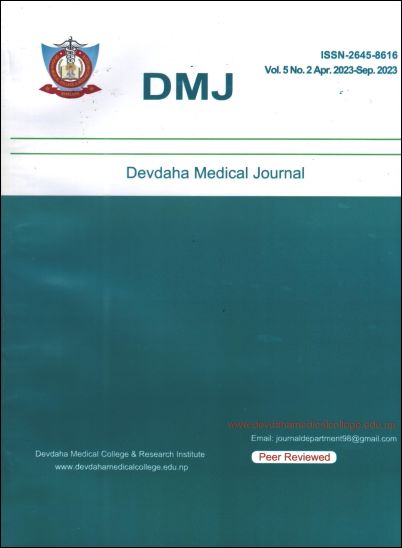Role of MRI in Non-Traumatic Neck Pain With or Without Cervical Radiculopathy
DOI:
https://doi.org/10.3126/dmj.v5i2.69796Keywords:
Cervical vertebrae, Degenerative changes, Magnetic Resonance Imaging, Neck pain, RadiculopathyAbstract
Introduction: Neck pain is the primary causes of disability worldwide and more common in a low socioeconomic country like Nepal. Magnetic Resonance Imaging (MRI) is now extensively used as the imaging modality to reveal diseases and abnormalities of the cervical vertebrae and the intervertebral discs. The objective of this study was to evaluate the role of MRI in the diagnosis of causes of neck pain and to document the pattern of findings seen in patients who presented with non-traumatic neck pain with or without radiculopathy in our setup.
Method: This was a cross-sectional study conducted in the Department of Radio diagnosis, Lumbini Medical College and Teaching Hospital (LMCTH), Pravas, Palpa, Nepal during the six months period from 1st March 2022 to 31st August 2022.
Results: A total of 70 MRI examinations of the cervical spine were included in this study. Cervical spondylosis was the commonest cervical spine abnormality found in 59 (84.2%) patients followed by disc bulge in 54 (77.1%) subjects. Disc herniation including protrusion, extrusion and sequestration were seen in 8 (11.4%) cases. Disc bulge/disc herniation caused spinal canal stenosis in 46 (65.7%), neural foraminal stenosis in 45 (64.2%) cases and spinal cord signal changes in 12 (17.1%) subjects. Disc degeneration and prolapse were most prevalent at C4-C5 level. There were non-degenerative causes of neck pain in 9 (12.8%) patients.
Conclusion: Degenerative cervical spine findings were the most common MRI patterns seen in symptomatic patients in this study.




